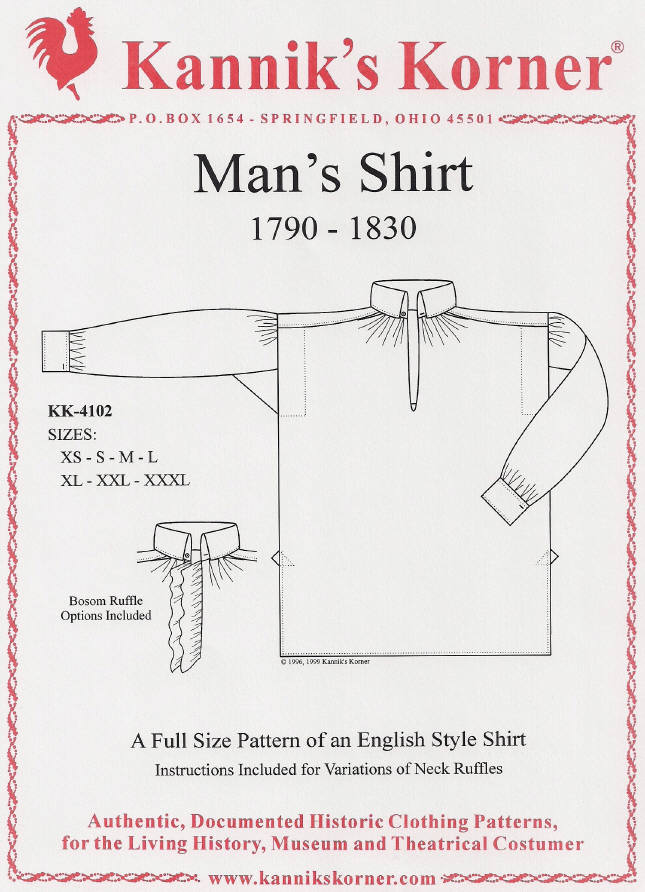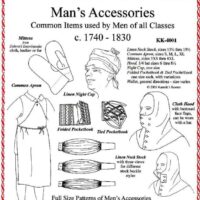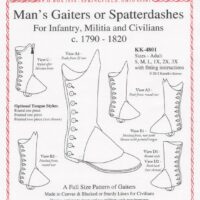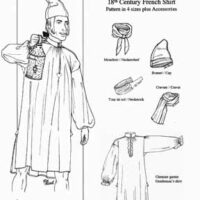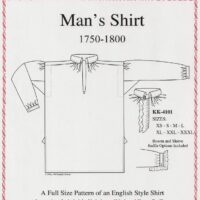Description
A shirt requires about 3 yards of linen in the early 19th century or 5 yards for 2. Most soldiers were issued off white linen shirts, but most working class men had natural unbleached linen shirts. Sailors, soldier’s work shirts & civilian laborers also wore blue check linen shirts. Gentleman & officers (when wearing a stock at the neck) wore finer & whiter linen shirts with ruffles which require a quarter yard of fine linen or muslin. Most soldier’s shirts also had a cheaper quality of finer linen ruffles at the bosom slit.
Notions required include a spool of 60/2 linen thread in white, off white or unbleached to match the shirt, 1, 2 or 3 thread buttons on the collar & sleeve buttons at the wrist or 1 thread button at each wrist which is what this pattern calls for. By the 1830s bone & shell buttons began to be mass produced & become an option this pattern doesn’t recommend.
For winter wear, shirts were frequently made of natural white wool flannel but red wool flannel and yellow wool flannel were also being used (check & stripe wool flannel was also used but is very difficult to find today) which may be substituted for the 3 yards of linen above. Don’t be fooled, this flannel is soft next to the skin & really helps when it’s cold out!

